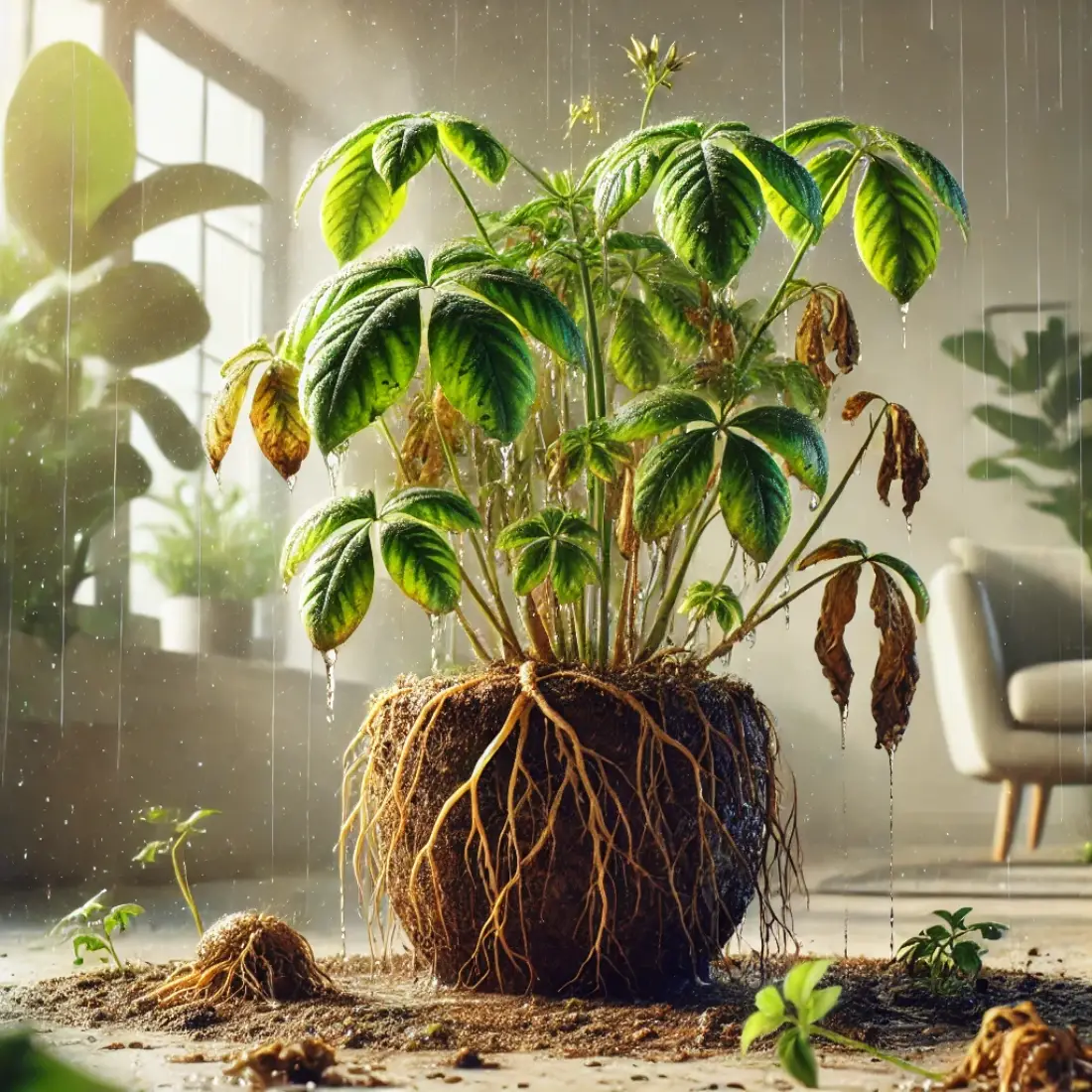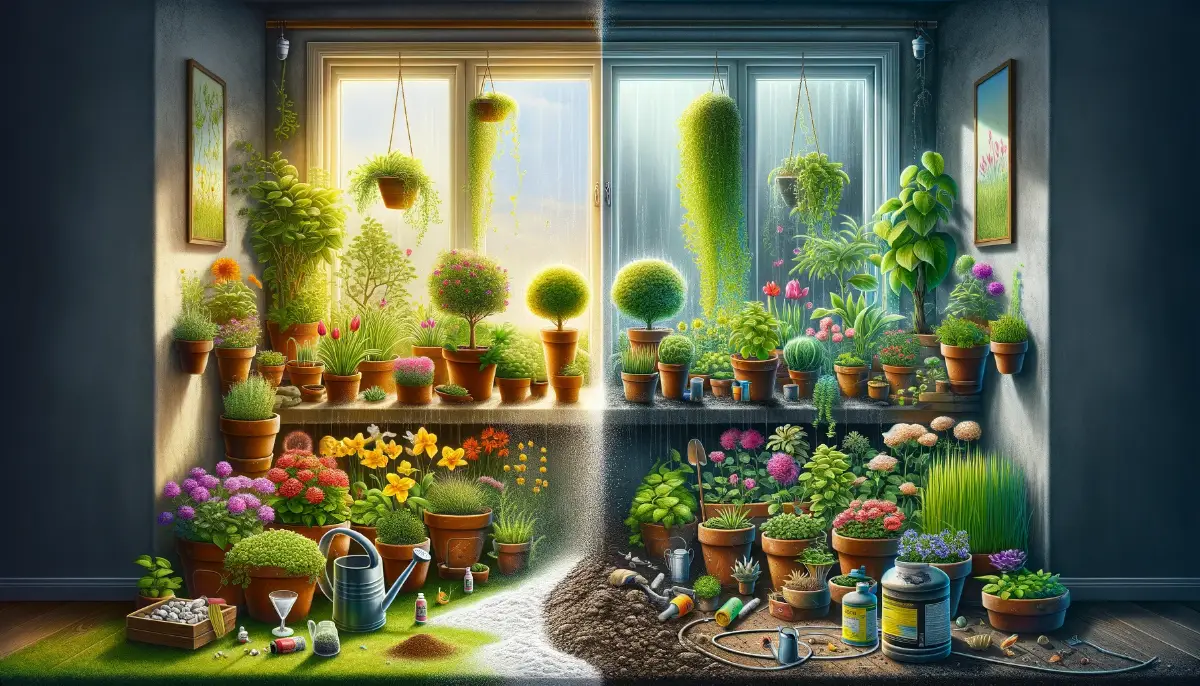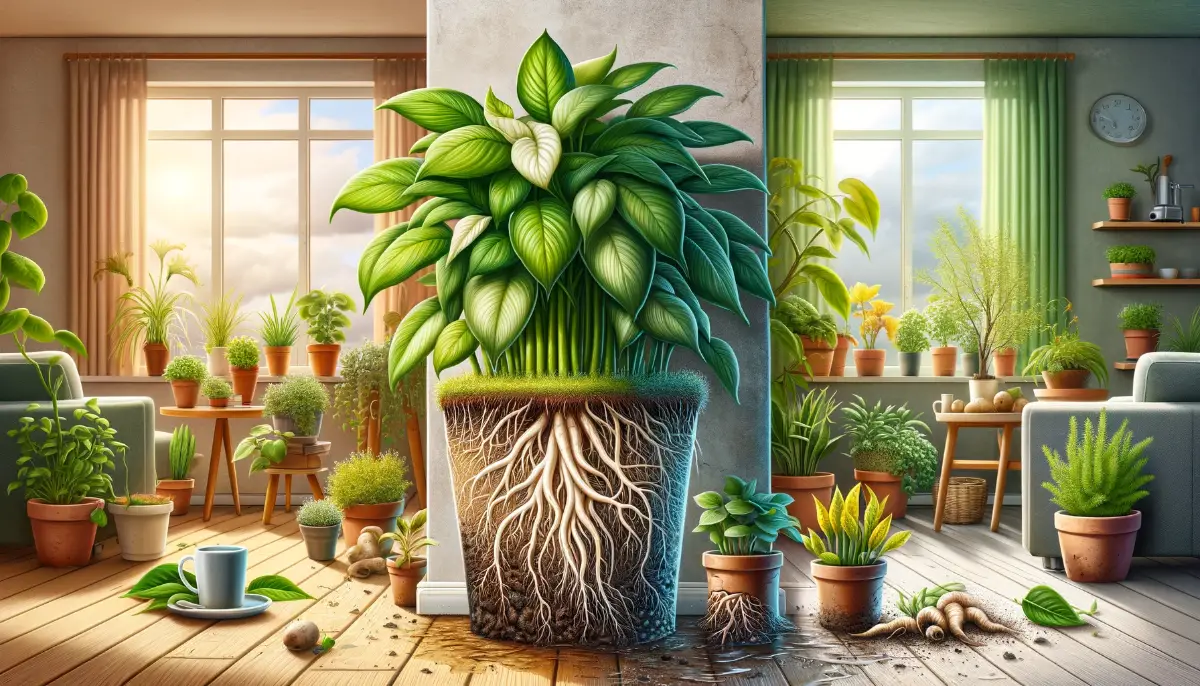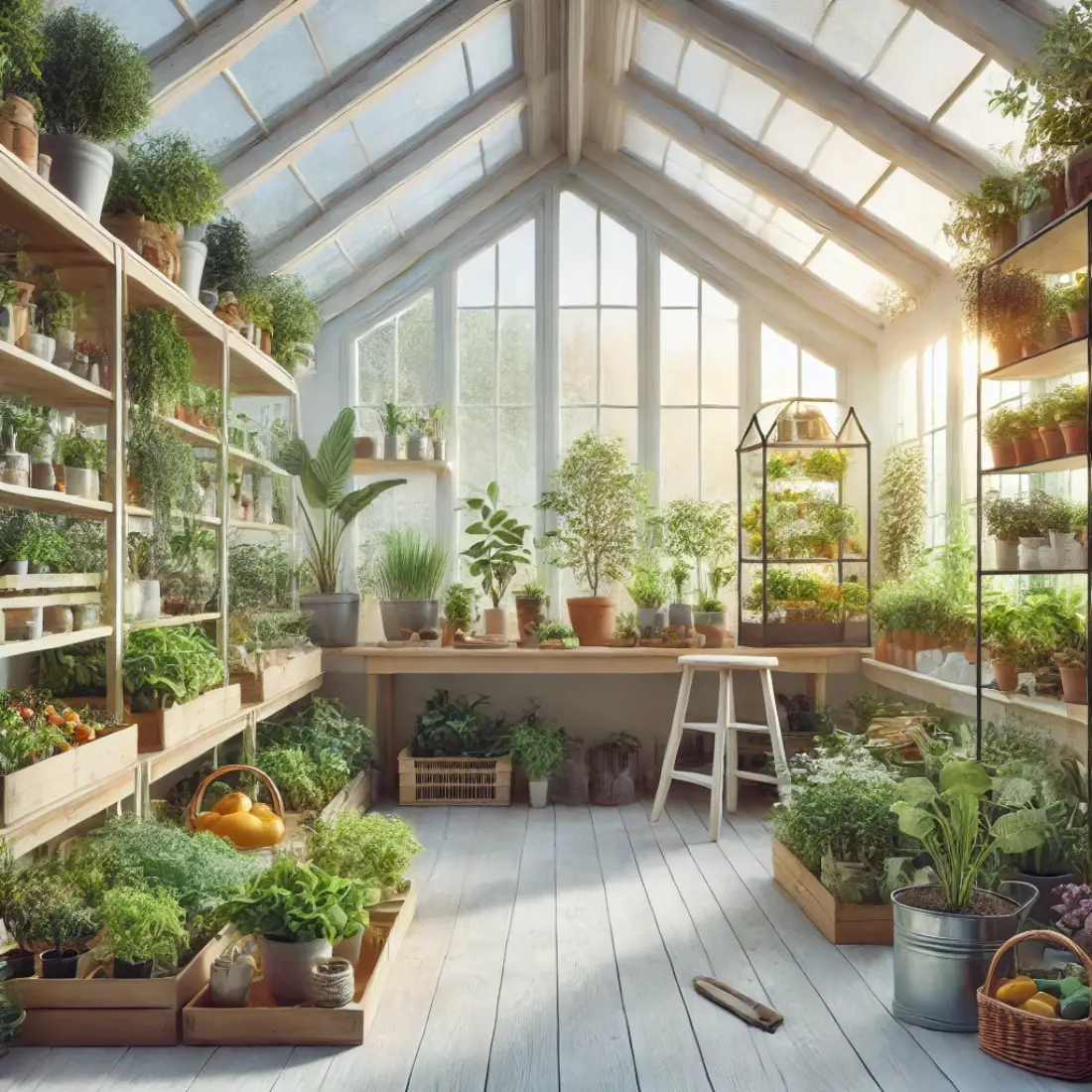Overwatering is a common issue that many plant enthusiasts face, often leading to detrimental effects on plant health. While it might seem like giving plants more water would ensure their growth and vitality, the opposite can be true.
Overwatering can suffocate plant roots, lead to nutrient deficiencies, and even cause root rot, ultimately destroying the plant. Understanding the signs of overwatering and learning how to prevent it are crucial steps in maintaining a thriving garden or indoor plant collection.
- Overwatering can cause significant damage to plants.
- Recognizing early signs can save plants from further harm.
- Prevention involves proper watering techniques and monitoring.
What is Overwatering?
Overwatering occurs when a plant receives more water than it needs, leading to waterlogged soil and insufficient oxygen for the roots. Plants require a balance of water and air in the soil for healthy growth. When this balance is disrupted, it can cause a host of problems that affect the plant’s overall health.
Causes of Overwatering
Several factors can contribute to overwatering:
- Frequent Watering: Watering too often without allowing the soil to dry out can lead to overwatering. Different plants have varying water needs, and not all require daily watering.
- Poor Drainage: Using pots without drainage holes or soil that retains too much moisture can prevent excess water from escaping, causing water to accumulate around the roots.
- Large Pots: Plants in oversized pots can be prone to overwatering because the large volume of soil retains more water than the plant can use, keeping the roots too wet for too long.
- Weather Conditions: During cooler, cloudy, or rainy periods, plants need less water. Continuing to water them at the same rate as during hot, sunny periods can lead to overwatering.
Differentiating Overwatering from Underwatering
While the symptoms of overwatering and underwatering can sometimes overlap, there are key differences:
- Soil Moisture: Overwatered soil is consistently wet and may develop a sour smell, whereas underwatered soil is dry and crumbly.
- Leaf Condition: Overwatered plants often have yellowing leaves with soft, limp stems, while underwatered plants typically have dry, crispy leaves.
How Overwatering Affects Plants
When a plant is overwatered, the excess water fills the air pockets in the soil, preventing roots from accessing the oxygen they need to function properly. This lack of oxygen can cause root cells to die and create an environment where harmful fungi and bacteria can thrive, leading to root rot and other diseases.
Signs of Overwatering
Yellowing Leaves
One of the first signs of overwatering is yellowing leaves. When plants receive too much water, their roots cannot absorb the oxygen they need, leading to yellow leaves. This symptom often starts with the older leaves at the bottom of the plant and progresses upwards. If left unaddressed, the yellowing can spread to the entire plant.
Wilting Despite Wet Soil
It might seem counterintuitive, but overwatered plants can wilt just like those that are underwatered. This occurs because the roots are damaged or drowning, preventing them from taking up water properly. If you notice your plant wilting but the soil is still wet, overwatering is likely the culprit.
Root Rot
Root rot is a severe consequence of overwatering. When the soil is constantly wet, it creates a perfect environment for fungal pathogens to thrive, attacking the plant’s roots. Roots affected by root rot will be brown, mushy, and emit a foul odor. This condition is often irreversible and can lead to the plant’s death if not treated promptly.
Fungus and Mold Growth
Overwatering creates a humid environment conducive to fungal and mold growth. You might notice white, fuzzy mold on the soil surface or a black, sooty mold on the leaves. These fungi can further weaken the plant and lead to other health issues.
Leaf Blisters or Edema
Edema is a condition where water pressure builds up in the plant’s cells, causing them to burst. This results in small, blister-like bumps on the leaves. These blisters can turn brown and crusty over time, making the leaves look unsightly and unhealthy.
Stunted Growth
Overwatered plants often show stunted growth due to the lack of oxygen to the roots and the overall stress on the plant. New leaves may be smaller than usual, and the plant may not produce flowers or fruit as expected. This reduced growth is a sign that the plant’s health is compromised.
Soil Not Drying Out
Healthy soil should dry out between watering sessions. If you find that your plant’s soil remains consistently wet, it indicates overwatering. This constant wetness prevents roots from getting the oxygen they need, leading to a decline in plant health.
Dropping Leaves
Overwatered plants may also drop their leaves, especially older ones. This leaf drop is a plant’s way of trying to reduce its water needs when its root system is compromised. If you notice leaves falling off for no apparent reason, check the soil moisture level.
Slow Root Growth
Healthy plants should have robust, well-developed root systems. Overwatering can hinder root growth, resulting in a sparse and weak root structure. When repotting or checking the roots, you might notice that the roots are not spreading or growing as they should.
Algae Growth
Another sign of overwatering is the presence of algae on the soil surface. Algae thrive in moist, wet environments, and their growth indicates that the soil is staying too wet for too long. This can further reduce the oxygen available to the roots.
How to Fix Overwatering
Stop Watering Immediately
The first step in fixing overwatering is to stop watering the plant immediately. Allow the soil to dry out completely before considering the next watering session. This pause gives the roots time to recover and helps prevent further damage.
Improve Drainage
Ensure your plant’s pot has adequate drainage holes to allow excess water to escape. If necessary, repot the plant into a container with better drainage. Adding a layer of gravel or small stones at the bottom of the pot can also help improve drainage.
Remove Affected Leaves
Trim off any yellowed, wilted, or damaged leaves. This not only improves the plant’s appearance but also helps it focus its energy on recovering rather than maintaining damaged foliage. Use clean, sharp scissors or pruning shears to make clean cuts.
Check and Treat the Roots
Carefully remove the plant from its pot and inspect the roots. Healthy roots are white or light tan and firm to the touch. If you find any brown, mushy, or foul-smelling roots, trim them off with sterilized scissors. After trimming, you may want to dust the roots with a fungicide to prevent further rot. Repot the plant in fresh, well-draining soil.
Allow the Soil to Dry
Before repotting, allow the roots to air dry for a few hours, especially if you had to trim away a significant portion of rotten roots. This step helps to ensure any excess moisture has evaporated, reducing the risk of further rot.
Adjust Your Watering Schedule
Revise your watering routine to prevent future overwatering. Water your plant only when the top inch of soil feels dry to the touch. Depending on the type of plant, you may need to adjust the frequency of watering. For example, succulents and cacti need less frequent watering compared to tropical plants.
Improve Soil Quality
Use a well-draining soil mix suitable for your plant type. You can create your own mix by adding perlite, sand, or orchid bark to regular potting soil to enhance its drainage properties. This will help prevent the soil from retaining too much water.
Use Proper Watering Techniques
Water the plant thoroughly, allowing the water to flow out of the drainage holes. Avoid leaving standing water in the saucer beneath the pot. Instead, let the plant drain completely before placing it back in its saucer.
Monitor the Plant’s Recovery
Keep an eye on your plant for any new signs of distress or improvement. Look for new growth as an indicator that the plant is recovering. Adjust your care routine as necessary to ensure the plant’s continued health.
Use Moisture Meters
Consider using a moisture meter to help gauge the soil’s moisture level accurately. This tool can take the guesswork out of watering and help prevent future overwatering by providing precise readings of when the soil needs water.
Preventative Measures for the Future
To prevent overwatering in the future, educate yourself on the specific water needs of your plants. Group plants with similar watering needs together, and avoid using the same watering schedule for all your plants. Additionally, be mindful of seasonal changes; plants typically need less water during the cooler months when they are not actively growing.
FAQs about Overwatering
How often should I water my plants?
The frequency of watering depends on the type of plant, the size of the pot, and the environmental conditions. As a general rule, water most plants when the top inch of soil feels dry to the touch. Always check the specific water needs of your plant species.
Can plants recover from overwatering?
Yes, plants can recover from overwatering if the issue is addressed promptly. Stop watering immediately, improve drainage, and remove any damaged roots. Allow the soil to dry out before resuming a more cautious watering schedule.
What is the best time of day to water plants?
The best time to water plants is early in the morning or late in the afternoon. Watering during these times allows the water to soak into the soil before the heat of the day evaporates it, ensuring the plants get the moisture they need.
Are there any tools to help prevent overwatering?
Yes, there are several tools available to help prevent overwatering, including moisture meters, self-watering pots, and soil probes. These tools can help you accurately gauge when your plants need water, reducing the risk of overwatering.
What are some signs that my soil is not draining properly?
Signs of poor soil drainage include consistently wet soil, water pooling on the surface, and a sour or musty smell from the soil. Adding perlite, sand, or gravel to the soil mix can improve drainage.
How can I tell if my plant is overwatered or underwatered?
To determine if a plant is overwatered or underwatered, check the soil moisture and the condition of the leaves. Overwatered plants typically have yellowing leaves and soggy soil, while underwatered plants have dry, crispy leaves and dry soil.
What type of soil is best for preventing overwatering?
Well-draining soil is best for preventing overwatering. A mix that includes perlite, sand, or peat moss can help improve drainage and aeration, allowing excess water to escape and air to reach the roots.
Should I use pots with drainage holes?
Yes, always use pots with drainage holes to allow excess water to escape. If you have pots without drainage holes, consider drilling holes or using them as decorative outer pots with a smaller, well-draining pot inside.
How do I know if I need to repot my plant due to overwatering?
If your plant shows signs of overwatering, such as yellowing leaves, root rot, or slow growth, it may be time to repot. Remove the plant from its current pot, trim any rotten roots, and repot it in fresh, well-draining soil.
What can I do to improve drainage in my existing pots?
To improve drainage in your existing pots, ensure they have adequate drainage holes. You can also add a layer of gravel or small stones at the bottom of the pot and mix perlite or sand into the soil to enhance drainage.










